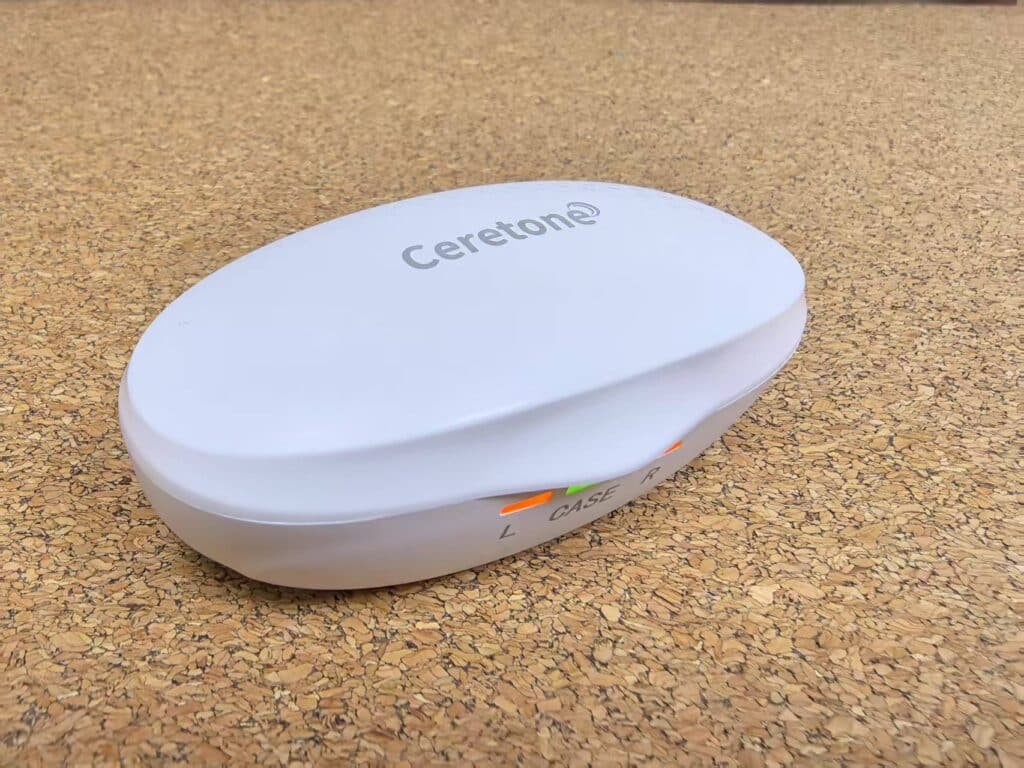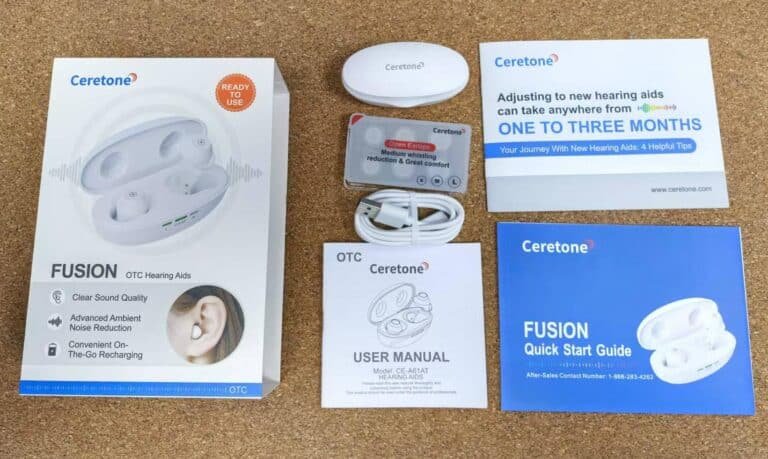
Ceretone Fusion Hearing Aids Review: A Budget-Friendly Option That Delivers
As someone who has undergone two ear surgeries due to otitis media, I’ve experienced slight hearing loss, which makes me a prime candidate for OTC hearing aids. Over the past few months, I’ve reviewed several OTC hearing aids, including two notable products from Ceretone. Having tested their Core One and Beacon models, I’ve become quite familiar with what this brand brings to the table.
The Core One is advertised as the smallest OTC hearing aid on the market, and while it lives up to its compact size, I found its voice amplification to be just average. On the other hand, the Beacon offers self-fitting capabilities, allowing users to test their hearing loss level and adjust the solution independently—a great feature, though it comes with a steep price tag.
Today, I’ll be reviewing Ceretone Fusion-The latest OTC hearing aid at a much more affordable price point($129 after discount).




Table of Contents
We Like
- Fair Price
- Quite Good Sound Performace
- Natural Sound
- Enough Gain for me
- No Delay
We Don't Like
- In Ear Design- Not that Comfortable for Long Time Usage
- Noise Cancelling Not that Good
Specification

Max Ouput(OSPL90): 107db
The Full-On Average Gain(FOG50): 28db
Total Harmonic Distortion: 1%
Self-Generated Noise: 25db
The Latency Value: 12ms
Frequency Response Bandwith: 200HZ-5300HZ
Frequency Repsonse Smoothness: 4db
Battery Life: 25 hours
Charging Cycle of Charging Case: 3 Times
Design and Build Quality

The design of the Ceretone Fusion isn’t particularly groundbreaking. It adopts the familiar TWS (True Wireless Stereo) earbuds look, a style that has been popular in hearing aids for quite some time. Unlike the Core One, which impressed with its ultra-compact size, or the Beacon, with its more traditional behind-the-ear style, the Fusion sits somewhere in between—functional but not exactly innovative in its appearance.
Despite the unremarkable design, the build quality feels solid. The packaging is durable, and inside, you’ll find a manual, quick guide, and necessary accessories. The materials give a positive first impression, with a sturdy feel that suggests the product is built to last. While the Fusion may not stand out visually, it certainly seems well-made and ready for daily use.
Performance in Real-World Tests

In a Quiet Room (Office Test)
- I tested the Fusion in my office, and it performed well in quiet conditions.
- Sounds like typing on the keyboard and clicking the mouse were enhanced with no noticeable delay.
- I could even hear people speaking outside my door when they talked loudly.
- While the sound isn’t 100% natural, it doesn’t have the tinny quality you get with cheap speakers.
- There was some background noise at times, but it wasn’t overwhelming.
In the Metro
- During a metro ride, I was able to hear the person I was speaking with, but the background noise was also amplified.
- The noise-canceling wasn’t strong enough to fully block out the noise of the metro, making it less effective in such noisy environments.
In a Restaurant
- In the busy atmosphere of a restaurant, the noise-canceling continued to be less than ideal.
- However, despite the background noise, I was still able to enjoy conversations without any major hearing difficulties.
In a Meeting
- During a meeting, I found the Fusion performed impressively.
- I could hear the speaker on stage clearly, with minimal distortion, making it a good option for formal settings like presentations or conferences.
While the Fusion’s noise-canceling might not be the best in very noisy environments, it still provides clear amplification in quieter settings and performs adequately in moderate noise environments like meetings and restaurants.
Comfort and Usability
The Fusion features an in-ear design, which is common for both hearing aids and earbuds. While I’m not a daily hearing aid user, I found them comfortable enough to wear for 3-4 hours—similar to how I use earbuds for music. However, after extended use beyond that, they became somewhat uncomfortable. This isn’t necessarily a fault of the Fusion itself, but rather a common downside of most in-ear hearing aids. For regular users, this might not be as much of an issue, as they may be more accustomed to the fit.
When it comes to usability, the Fusion excels. It’s incredibly simple to operate, and the quick guide provided is easy to follow. Even for those who aren’t tech-savvy or familiar with smartphones, this device is straightforward enough to handle without any difficulty. The overall user experience is intuitive, making it accessible for a wide range of users.
Value for Money
Compared to the other OTC hearing aids I’ve reviewed, the Fusion stands out as a budget-friendly option. It’s significantly more affordable than both traditional hearing aids and Ceretone’s previous models like the Beacon. Given its performance and ease of use, this price point is particularly attractive for those with mild to moderate hearing loss.
For first-time buyers, the Fusion offers a great starting point—delivering good value without the steep investment required by higher-end models. While it doesn’t offer the most advanced features, the price-to-performance ratio makes it an excellent choice for those looking for a cost-effective hearing solution.
Conclusion
While the Fusion doesn’t deliver any major surprises, it does stand out as a qualified hearing aid that covers the basics well. It may not have the advanced features of more expensive models, but for those on a budget or looking for an entry-level hearing aid, the Fusion provides solid performance at an affordable price. If you’re seeking a reliable solution for mild to moderate hearing loss without breaking the bank, the Fusion is a great option to consider.





